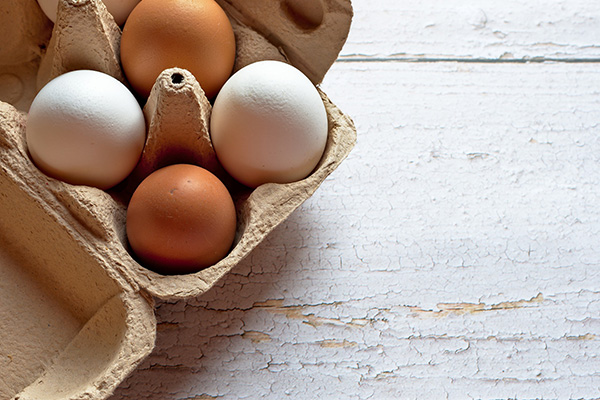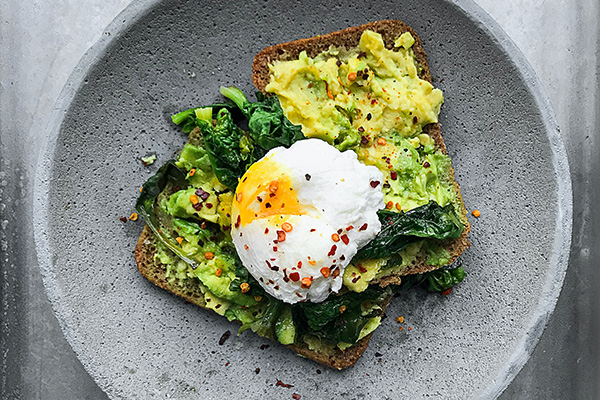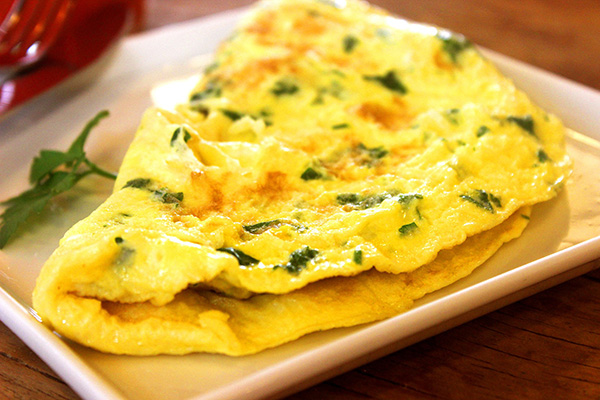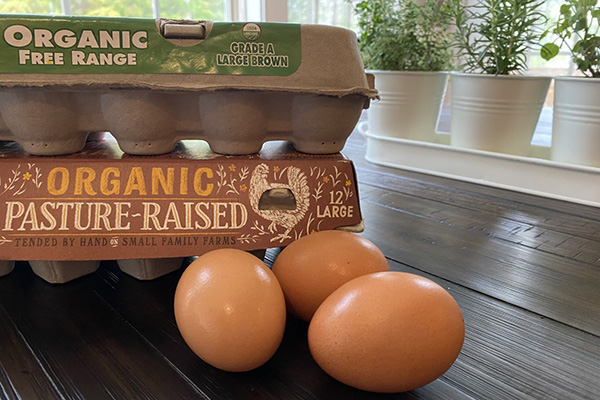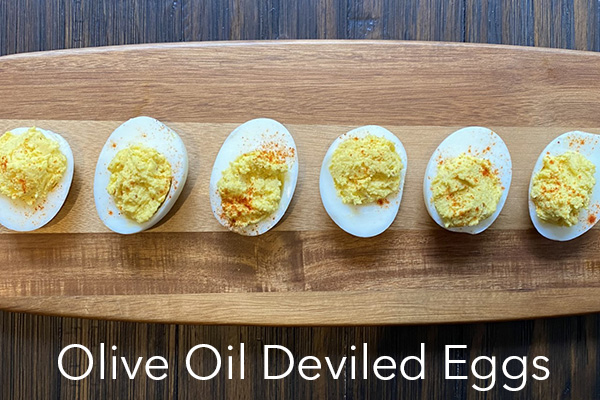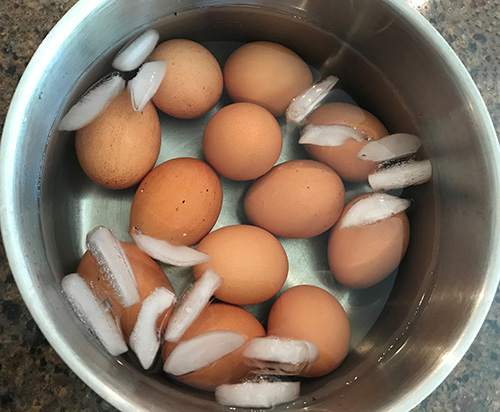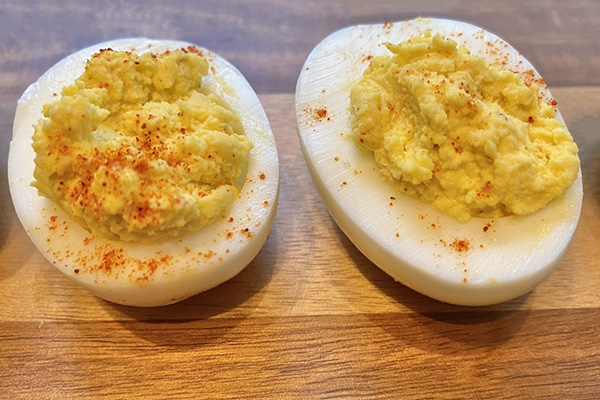Which came first — popularizing eggs as great breakfast choice or blaming eggs for high cholesterol levels? For a food created by nature, eggs sure have been put through the wringer! Let’s dive into the facts and latest research related to the great egg debate.
#Eggs – To eat them or not to eat them, that is the question. #saslife Click To Tweet
Are eggs a healthy option or not?
The short answer is yes, eggs are a nutrient-dense food, boasting about 6 grams protein per large egg as well as significant amounts of selenium, iodine, B vitamins, vitamin A and phosphorus, as well as some vitamin D, vitamin E, vitamin K, iron, calcium and zinc. The yolk contains more of these nutrients than the white, though the white contains more niacin (one of the B vitamins).
Egg yolks are also some the best sources for lesser known, but no less important, nutrients choline and yellow-orange carotenoids lutein and zeaxanthin. Choline plays an important role in methylation (a biochemical reaction related to expression of genes), production of signaling molecules in the brain and building cell membranes. Lutein and zeaxanthin are antioxidants whose claim to fame is supporting eye health, particularly counteracting degenerative processes that can affect our eyes like cataracts and macular degeneration. In fact, eating egg yolks can improve lutein and zeaxanthin levels in the blood and improve macular (eye) health.
Are they a good source of protein?
Though 6 grams is not a whopping amount of protein, eggs are one of the most common breakfast foods that contain protein and no carbs and aren’t highly processed, so they are certainly worthy of holding a spot on your breakfast plate. Quick reality check here just to keep things in perspective: you’d have to eat four eggs to get the equivalent of the protein in 3 ounces of chicken breast (about the size of a deck of playing cards), so if you’re relying on just one egg in the morning to meet your protein needs for your first meal of the day, you’ll be falling short. Look here to peruse some other options to up your protein at breakfast.
What about cholesterol?
There’s no denying that eggs (mainly the yolks) are high in cholesterol and saturated fat. The ongoing debate is whether that cholesterol and saturated fat in the egg translates to increased risk of heart disease in the people that consume them. A 2020 meta-analysis published in Nutrients found more egg consumption was associated with increased LDL cholesterol and less ideal LDL to HDL cholesterol ratio. That being said, it’s more complicated than just LDL cholesterol as a bad thing and HDL cholesterol as a good thing. This 2014 study examined cholesterol particle sizes and concluded that increased egg consumption led to an increase in HDL (good) cholesterol, an increase in the size of particles carrying around the LDL and HDL cholesterol (also a good thing) and a reduction in insulin levels (a very good thing). Though clearly even researchers are divided on the great egg debate, most health experts agree that eating up to six or seven whole eggs a week, or about one a day, will not increase risk of cardiovascular disease and one to four eggs a week may actually decrease the risk of stroke.
Still concerned about your cholesterol? Look here for evidence-based tips to manage cholesterol.
How should I choose them?
Now that we are in agreement that eggs can be a healthy part of a balanced eating pattern, check out Cracking Egg Carton Labels: What They Really Mean to learn which eggs are best and why. Spoiler alert: the orange yolks of pasture-raised eggs laid in warm weather is a clue that the hens have been foraging on grass and insects and are passing down healthy carotenoids to you. Pasture-raised eggs also contain higher amounts of omega 3s, vitamin A, vitamin E and vitamin K2.
What if I can’t eat them?
Eggs are used as ingredients in many foods/dishes. If you have an egg allergy or sensitivity, check out Incredible, Edible Egg...Substitutes for swaps that could work for you. If you’re looking for something to replace your morning bowl of scrambled eggs, consider a tofu scramble or the chickpea scramble recipe coming later this month.
Olive Oil Deviled Eggs
Makes 12 servings (2 egg halves per serving)
Recipe adapted from: Med Instead of Meds
PRINT RECIPE
Ingredients
1 dozen large eggs
1 Tbsp Dijon mustard
1 tsp vinegar (white wine, champagne or white)
⅓ cup extra virgin olive oil
paprika (optional)
Directions
HARD BOILING EGGS: INSTANT POT METHOD
- Pour 1 cup cold water into the inner pot and place in your Instant Pot.
- Place eggs in the inner pot on the included steam rack.
- Set steam release valve to the Sealing position.
- Select Pressure Cook or Manual, set to High pressure and adjust to 6 minutes.
- While eggs are cooking, prepare a bowl of ice water.
- When timer goes off, Quick Release the pressure, and use tongs or a slotted spoon to transfer eggs to the ice water bath for at least 5 minutes for fast cooling and easy peeling.
NOTES: My hard boiled eggs come out best using this Instant Pot method, but other prefer the 5-5-5 method which can be found easily via an internet search. When making hard boiled eggs using this method, it is recommended you make at least 6 eggs at a time.
HARD BOILING EGGS: STOVE TOP METHOD
- Place eggs in a single layer in a pot and cover with cold water by 1 to 2 inches.
- Heat over high heat until the water comes to a rolling boil, cover the saucepan with a lid, cook for 30 seconds, then remove completely from the heat and let stand for 12 minutes.
- While eggs are cooking, prepare a bowl of ice water.
- Use tongs or a slotted spoon to transfer eggs to the ice water bath and leave for at least 5 minutes for easy peeling eggs.
DEVILING EGGS
- Peel eggs, cut them in half and place the yolks in the bowl of a food processor.
- Add the vinegar and mustard.
- Pulse the food processor a few times to combine.
- With the processor running, drizzle in the olive oil. Most processors have a hole in the pusher to allow for a slow drizzle of oil. If yours does not, just add slowly in a small stream.
- Stop the food processor and scrape the mixture from the sides of the bowl.
- Pulse once or twice to fully combine. The mixture will be light and fluffy.
- Fill the egg whites with the yolk mixture
- Sprinkle with paprika (optional).
